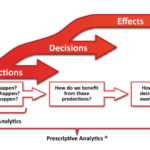Before setting KPIs for your contact center, you need to define what you want it to achieve. One crucial factor to consider is the customer experience. Are you looking to reduce customer wait times or increase first contact resolution rates? You can improve customer satisfaction levels or increase the number of sales made through the contact center. Once you clearly understand your goals, you can develop strategies for achieving them. This may involve changing your staffing levels or training your employees on new methods for handling customer inquiries. Whatever approach you take, the key is ensuring your goals are realistic and achievable. By taking the time to Define what you want your contact center to achieve, you can set yourself up for success.
Research the KPIs that are most relevant to your goals and determine how you will measure them
A key performance indicator (KPI) is a metric to evaluate progress toward a specific goal. When choosing KPIs for your business, selecting ones aligned with your overall objectives is essential. For example, if your goal is to increase sales, you might track KPIs such as the number of upsells, conversion rate or marginal sales. To improve customer satisfaction, do a post-call or post-chat survey, and measure KPIs such as net promoter score or customer churn rate.
Contact center KPIs are essential tools for measuring the performance and efficiency of customer service teams. They can provide the following:
- Valuable insights into how well customer service representatives (CSRs) handle calls.
- The speed of resolution times.
- The overall quality of the customer experience.
Common contact center KPIs include first-call resolution rates, the average speed of answer (ASA), average handle time (AHT), customer satisfaction scores, and abandonment rates.
By carefully selecting the KPIs most relevant to your goals, you can ensure that you are progressing toward achieving your desired results. Once you have determined which KPIs to track, you need to establish how you will measure them. This can involve installing tracking software or manually collecting data regularly. No matter what method you use, it is vital to ensure that your data is reliable and accurate so that you can make sound decisions based on it. By carefully selecting and measuring suitable KPIs, you can gain valuable insights into your business and ensure you are on track to meet your goals. Most companies mainly focus on these three customer care metrics:
- Resolution time measures how long it takes agents to resolve customer inquiries. This KPI helps identify areas where the resolution process can be improved and can also help determine staffing needs.
- Customer satisfaction rate measures customer sentiment toward the contact center’s performance. It can be measured through regular surveys and feedback forms, providing valuable insight into the customer experience.
- Productivity is a crucial measure of contact center success. Measuring this KPI allows managers to identify areas where agent performance can be improved.
They can provide valuable insights into how well customer service representatives (CSRs) handle calls.
Typical KPIs for customer care teams who also upsell:
- Sales conversion rate: The percentage of leads or inquiries that turn into actual sales.
- Average revenue per call: The average amount of revenue generated per call.
- Customer retention rate: The percentage of customers who continue to do business with a company over time.
- Upselling/cross-selling rate: The percentage of customers who purchase additional products or services.
- Repeat business rate: The percentage of customers who make repeat purchases.
- Customer lifetime value: The estimated value a customer will bring to a company over the course of their relationship.
- Sales quota attainment rate: The percentage of customer care representatives who meet or exceed their sales quota.
- Sales cycle length: The average length of time it takes to close a sale.
- Customer complaints/inquiries per call: The average number of customer complaints or inquiries received per call.
By monitoring these KPIs regularly, contact centers can better manage operations and ensure customer satisfaction and improve sales. They also provide valuable data that can help inform strategic decisions.
Set target values for each KPI for your contact center
If you want your contact center to be thriving, it’s important to set target values for each key performance indicator (KPI). By doing so, you’ll be able to track progress and identify areas that need improvement. Several KPIs are relevant to contact centers, such as customer satisfaction, first-call resolution, and average resolution time. To set target values for each KPI, you’ll need to consider your contact center’s specific goals and objectives. For example, if you’re aiming for a high level of customer satisfaction, you should set a target value of 90% or higher. Once you’ve set target values for each KPI, you can start working towards achieving them. Monitoring progress regularly will help ensure that your contact center is on track to meet its goals.
Monitor progress towards your KPIs regularly and make changes as necessary.
As any business owner knows, setting goals is essential for success. However, it is just as important to track progress toward those goals and make changes as necessary. This is where KPIs come in. KPIs (key performance indicators) are a way of measuring progress toward specific goals. They can track resolution time, customer satisfaction, productivity, and more. By monitoring KPIs regularly, businesses can ensure they are on track to achieve their goals. If a KPI is not met, it can signal that something needs to be changed. For example, if resolution time is increasing, it may be necessary to add more staff or improve training. By monitoring KPIs and making changes as necessary, businesses can ensure they are making progress toward their goals.
By setting measurable goals and regularly checking in on your progress, you can ensure that your contact center is constantly improving and meeting your customers’ needs.












